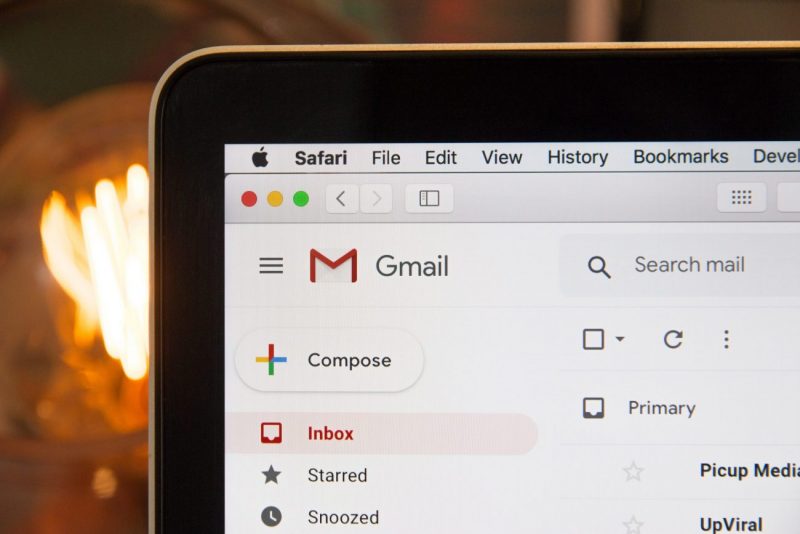What are spam traps?
If your company spends a lot of time creating outbound campaigns or sending emails, spam traps can be your worst enemy. In spite of this, they can be of help to us since they are in charge of filtering scams and phishing emails.
Its main objective is to protect the user from malicious or dangerous information. In this way, the user will only receive content of interest. Spam traps or trap spam are a user security tool.
It is based on the use of an email address in order to avoid spam from other users. If you add this email address to your contact list you will be able to avoid all malicious content sent to you.
Behind this email there is no person, nor will you be able to maintain a two-way communication. It is only based on having it in the contact list to be protected from this type of content.
These traps take the form of honeypots. These are responsible for sending all this content to the spam folder. That is to say, it would be like a firewall to any user with bad intentions.
This has its negative side for the company, since if the company’s email is found in this email it will damage the domain created. This will hurt your deliverability rates.
Once an email is found among the spam traps it will be damaged. Because of this, the institutions that are in charge of checking spam traps will mark it as a spammer.
Types
Among the types of traps there are some more dangerous than others, that is why we are going to let you know the types of spam you can find:
- Pure spam traps
Also known as pristine traps or honeypots. These are new email accounts that are dedicated to tracking spam. These accounts are created by internet service providers.
This tool is perfect because they have no history and can create new spam reports. Companies can fall into this type of trap if they use unverified lists or bots to get email addresses.
- Spam traps with recycled domains
People who own spam traps can activate a domain of a company or individual that is not in use. In this way, you will be able to see who is sending emails to an address that no longer exists. You can then detect these spammers and blacklist them.
- Spam traps with recycled addresses
This form of spam is very similar to the previous one. For example, if a person subscribes to content such as a daily newsletter and does not access the email for a long time, that email address will be classified as spam.
This happens because there has been no interaction with that content in a given time. Once the provider accesses this inactive address they will see that no interaction has been experienced.
Therefore, it is very important that companies always check their contact list, see the users who are no longer interested, those who have unsubscribed or those who have not made any kind of response with that mail.
- Spam traps with invalid emails
This type of trap is based on typographical errors. We must be careful when sending wrong emails. This can happen sometimes, but if it is a continuous sending we will be qualified as spammers.
As you can see there are many types of spam traps. You will have to take them into account when sending your mailing campaigns, newsletter or any content you send through the mail.
How to identify them?
At the moment we send a mailing campaign we cannot know if our emails have fallen into a spam trap. We will not receive any type of notification nor will we be alerted about it.
So to find out if our email has been caught by a spam trap we should look at different metrics such as the following:
- Lower open rate
- Lower response than usual
- Higher bounce rate
If our company is experiencing any of these factors we should check our contact list to see if there are any erroneous emails or if any of them have been deactivated.
Why do emails fall into spam?

Mailbox providers do not have a unique filter that identifies spam emails. Each domain will use a filter in your company. But, they do have similar characteristics to identify spam emails.
Some of the factors that are taken into account are the following:
- Authorized entry to the domain.
- If your email is blacklisted
- Suspicious links
- Participation rate
- Email copy
Spam filters analyze the header, algorithms, whitelists, blacklists or keyword matching among others. The filter is in charge of analyzing these elements and thus labeling the email as spam or not.
In this analysis there can be errors since some are qualified as spam and others are not, this is what we know as false positives. This is what we know as false positives or negatives. It is therefore essential to know how to avoid falling into this abyss of mailing campaigns.
How to avoid it?
If you want to avoid the spam folder, you must take into account the following elements:
- Technical configuration
One of the main reasons why our email can get into spam is the lack of technical configuration of the SPF (Sender Policy Framework) and DNS (Domain Name System).
Both elements must be configured, otherwise it will not be recognized and the email will be sent to spam. In other words, the SPF is structured to recognize the IP address of the domains that send the email. In this way the SPF consults the DNS, in which the standard IP addresses are registered, and detects hackers trying to send email from other IPs.
Another way is to configure DKIM (Domains Keys Identified Mail). This consists of creating a unique private key that can be decrypted by the user receiving the mail. This technique is a bit complicated but it guarantees the security of your e-mails.
- Continuous sending over time
If you send an avalanche of mails to different contacts, the spam filter will believe that it is malicious mail. This tactic has been one of the most used by spammers.
Therefore, we recommend you to personalize your mails with the recipient’s name or even make 2 different mails depending on the end user. Thanks to this your mail will not go to the trash but will be received in the inbox.
- Avoid words marked as spam
There are a number of words that are directly related to spammers. We must avoid using this word to avoid falling into the hands of the filters. These are some of the words you should avoid: promotion, free, offers, sales, website visits, percentages or numbers, congratulations, guaranteed, buy…
- Checking the contact list
It is very important to check the list of contacts to whom we are going to send the mail. If among them we have many inactive users, the spam filter will block our mail. Therefore, it is essential to eliminate this type of contacts from our final list.
- Sending mails only to active contacts
As we have said, if we send mail to inactive contacts, our mail will fall into the hands of the filter spam. This is one of the typical techniques of spammers and for this reason we must be careful with this type of method.
- Business reputation
Reducing spam filters aims to improve your company’s reputation. Therefore, it is important to have these features provided by email providers.
- Volume: do not exceed a limit between 200 and 300 emails per day.
- Consistency: constant sending of emails. It is not advisable to send a boom of emails on the same day.
- Maintain a good ratio: email sent to email received.
- Delivery capacity reinforcement: configure the email preparation function.
- Sending quickly: send emails throughout the day to be effective.
- Monitoring of the following metrics:
-
- Open rate.
- Response rate.
- Bounce rate.
- Unsubscribe rate.
The case of gmail
In recent years we are receiving a large amount of spam in our emails. This makes us think that Gmail spam filters are not working well. Phishing campaigns or scams with our orders are the most received star mails these days.
The way to do it? Easy. They imitate a basic email of all companies: unsubscribe button, social networks, body text in English with an HTML structure and an image which is clicked and redirected to the page where personal data is requested.
This type of scam is becoming more and more common as they have a code that simulates encrypted files and thus passes all spam filters that are active on the Gmail platform.
Spain, the country with the most spam in the world?
The truth is that our country is in the top 10 countries with the most spam in the world. The pandemic has triggered the digitization of many sectors, but it has also led to an increase in non-spam emails.
This means that when working at home, institutional emails have been reproduced more quickly and have surpassed spam. But, no, spam has not decreased as you might think. In fact, it has remained at the same figures as last 2019.
Our country originates almost 3% of spam worldwide. On the other hand, we receive almost 10% of it. This is one of the favorite destinations for this type of malicious information.
Spam study
As we have mentioned, this 2021 the trend remains the same as in 2020. Institutional emails have increased due to teleworking and spam emails continue their trend. In Spain this second quarter saw a boom in spam emails from April to June. On the other hand, the summer saw a In summer, however, there was a notable drop in July, with a stable trend in August and September.
Spain is among the countries that emit the least spam with only 3%, but it does receive almost 10%. At the top of the list we have Russia with almost 25%, followed by Germany (14.19%) and China in third place (10.31%).
As we can see from the map made by Kapersky in its quarterly study, Russia is the country that experiences the most spam origins on a global scale.
As we can see, consumers are fed up with receiving emails that want to deceive them or bombard them with useless information. For this reason, companies must be careful with the way in which we send the mail, the repetition of content and above all, the dissemination of useless information.
We advise you to follow the steps mentioned above if you do not want your emails to end up in the spam folder of your customers. In addition, if you can create useful, entertaining and adaptable content for your consumer, you will have a valuable element to attract consumers.
Invest in your marketing department to create valuable content. Teamwork will increase the likelihood of creating useful information that won’t be labeled as spam when it’s time to send.





